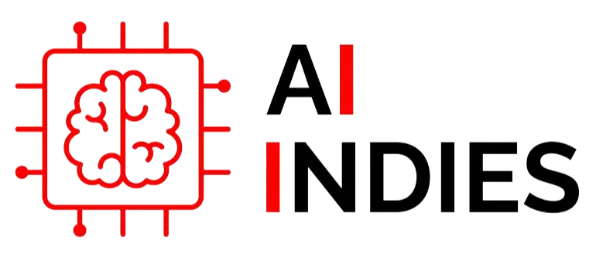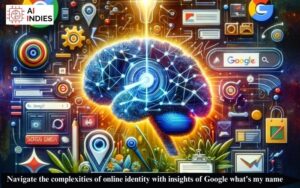In today’s fast-paced, data-driven world, fostering innovation is essential for organizations to stay competitive. One of the most effective tools for driving innovation is the knowledge graph. Knowledge graphs, a way to store and represent information that captures the relationships between data points, can play a pivotal role in enabling organizations to harness the power of their data, driving new insights and fostering innovation. Here’s how knowledge graphs can boost innovation initiatives.
Understanding Knowledge Graphs
A knowledge graph is a network of interconnected entities, where each entity represents a piece of information. These entities are linked through relationships, forming a graph structure that reflects the real-world connections between different pieces of data. This structure enables a more intuitive understanding of complex data sets, making it easier to extract meaningful insights.
Enhancing Data Integration and Accessibility
One of the primary challenges organizations face is integrating data from diverse sources. Knowledge graphs excel at unifying disparate data sets, creating a cohesive view of information. By connecting data from various departments, systems, and external sources, knowledge graphs enable a holistic view of an organization’s data landscape. This integrated approach allows for easier access to relevant information, breaking down silos and promoting collaboration.
Facilitating Advanced Analytics
Knowledge graphs provide a robust foundation for advanced analytics. By representing data in a structured, interconnected manner, they enable sophisticated querying and analysis. Machine learning algorithms can leverage the rich relationships within knowledge graphs to uncover hidden patterns, trends, and insights. This capability is particularly valuable for innovation initiatives, as it allows organizations to explore new ideas and identify opportunities that may not be apparent through traditional data analysis methods.
Driving Contextual Understanding
Innovation often requires a deep understanding of context. Knowledge graphs excel in capturing and representing context, as they inherently model the relationships between entities. This contextual understanding is crucial for making informed decisions and identifying innovative solutions. For example, in a research and development setting, a knowledge graph can reveal how different research papers, patents, and experiments are related, helping researchers identify new areas for exploration.
Enhancing Collaboration and Knowledge Sharing
Effective collaboration is essential for innovation. Knowledge graphs facilitate collaboration by providing a shared, interconnected view of information. Team members can easily access and contribute to the knowledge graph, ensuring that valuable insights are shared and leveraged across the organization. This collaborative approach fosters a culture of continuous learning and innovation, as employees can build on each other’s ideas and discoveries.
Supporting Decision-Making Processes
Innovation requires agile and informed decision-making. Knowledge graphs empower decision-makers by providing a comprehensive view of relevant information. By visualizing the relationships between different data points, knowledge graphs enable decision-makers to see the bigger picture and make connections that may not be immediately obvious. This holistic perspective is invaluable for evaluating potential innovations and determining the best course of action.
Enabling Personalization and Customer Insights
In customer-centric industries, innovation often revolves around enhancing the customer experience. Knowledge graphs enable organizations to gain deeper insights into customer behavior and preferences by integrating data from various touchpoints. This holistic view allows for more personalized and targeted innovations, whether it’s developing new products, refining marketing strategies, or improving customer service.
Accelerating Research and Development
In research and development, speed is of the essence. Knowledge graphs can accelerate the R&D process by providing quick access to relevant information and facilitating the discovery of new connections. Researchers can use knowledge graphs to explore related work, identify potential collaborators, and track the evolution of ideas over time. This accelerated access to information can significantly shorten the innovation cycle and bring new products and solutions to market faster.
Improving Data Quality and Consistency
Knowledge graphs help improve data quality and consistency by providing a unified framework for data governance. By ensuring that data is accurately linked and standardized, organizations can reduce redundancies and errors, leading to more reliable insights. This consistency is crucial for innovation, as it ensures that all stakeholders are working with accurate and up-to-date information.
Enhancing Knowledge Discovery
Knowledge graphs facilitate knowledge discovery by making it easier to identify and explore relationships between disparate pieces of information. This capability is particularly valuable in complex domains where the connections between data points are not immediately obvious. By surfacing these hidden relationships, knowledge graphs enable researchers and innovators to discover new concepts and ideas that can drive breakthrough innovations.
Enabling Semantic Search and Enhanced Querying
Traditional keyword-based search can be limiting when it comes to complex queries. Knowledge graphs support semantic search, which understands the context and meaning of search terms, providing more relevant and precise results. This enhanced querying capability allows innovators to find the exact information they need quickly, saving time and effort.
Supporting Agile Development and Rapid Prototyping
In fast-paced innovation environments, the ability to quickly iterate and prototype new ideas is essential. Knowledge graphs provide a flexible and dynamic data model that can easily adapt to changing requirements. This flexibility supports agile development methodologies, enabling teams to rapidly prototype, test, and refine new concepts.
Facilitating Regulatory Compliance and Risk Management
Innovation often involves navigating complex regulatory environments and managing risks. Knowledge graphs can help organizations track and comply with regulatory requirements by mapping out the relationships between regulations, policies, and operational data. This capability ensures that innovative initiatives are aligned with compliance standards, reducing the risk of legal issues and ensuring smooth implementation.
Empowering Cross-Functional Teams
Innovation thrives in environments where cross-functional teams can collaborate effectively. Knowledge graphs provide a common platform for diverse teams to access and share information. Whether it’s R&D, marketing, finance, or operations, each department can contribute to and benefit from the collective knowledge, fostering a more integrated and innovative organizational culture.
Leveraging External Data Sources
Innovation often requires insights from outside the organization. Knowledge graphs can integrate external data sources, such as industry reports, social media, and market research, enriching the internal data landscape. This integration provides a more comprehensive view of the market and competitive landscape, helping organizations identify emerging trends and opportunities.
Enabling Real-Time Insights and Analytics
In today’s dynamic business environment, real-time insights are critical for staying ahead. Knowledge graphs support real-time data integration and analytics, allowing organizations to monitor trends and make data-driven decisions on the fly. This real-time capability is particularly valuable for innovation, as it enables rapid response to changing conditions and new opportunities.
Promoting a Culture of Continuous Improvement
Knowledge graphs foster a culture of continuous improvement by making it easy to capture and share lessons learned from innovation projects. By documenting successes and failures within the knowledge graph, organizations can create a valuable repository of insights that can be leveraged for future initiatives. This continuous learning loop helps refine innovation processes and drive ongoing improvements.
Optimizing Resource Allocation
Effective resource allocation is crucial for successful innovation. Knowledge graphs can help organizations identify and allocate resources more efficiently by mapping out the relationships between projects, teams, and available assets. This optimization ensures that the most promising initiatives receive the necessary support, maximizing the impact of innovation efforts.
By incorporating these additional points, organizations can further harness the power of knowledge graphs to drive innovation, streamline processes, and achieve greater success in their innovation initiatives.
Conclusion
Knowledge graphs are a powerful tool for boosting innovation initiatives. By integrating data, enhancing analytics, fostering collaboration, and supporting informed decision-making, knowledge graphs enable organizations to unlock the full potential of their data. As businesses continue to navigate an increasingly complex and competitive landscape, leveraging the power of knowledge graphs will be essential for driving innovation and staying ahead of the curve. Embracing this technology can transform the way organizations approach innovation, leading to more meaningful and impactful outcomes.




